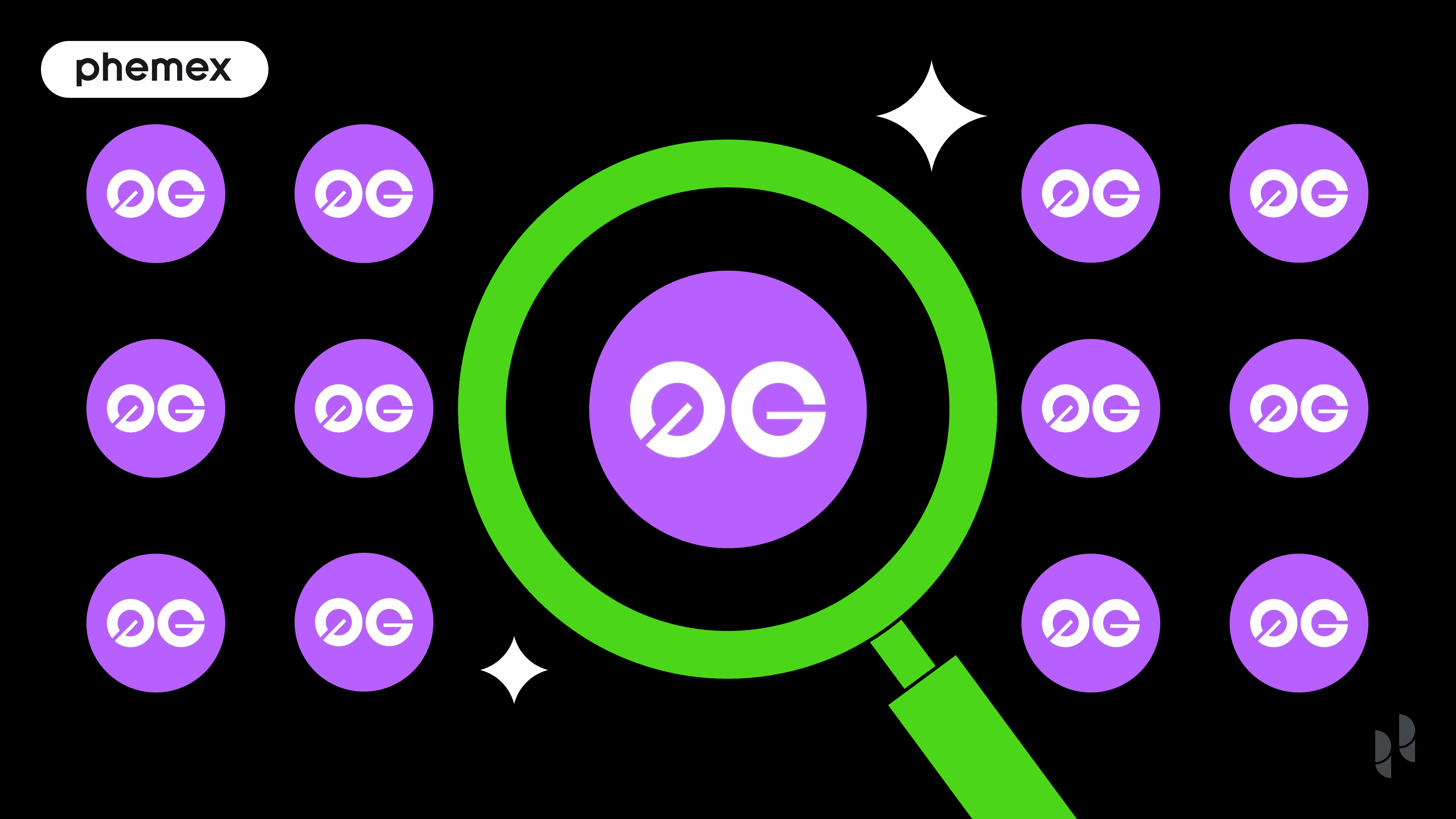Summary
- Elrond is a security-focused public blockchain. It is a revolutionary Secure Proof-of-Stake (SPoS) sharding protocol that’s rapidly transforming the crypto space.
- Elrond’s goal is to create a decentralized network that offers an improved, more streamlined experience than the traditional financial services space.

The global economy is relentlessly developing innovative products in the permissionless networks space. The demand for secure decentralized networks has been rising over the last few years, and Elrond, a security-focused public blockchain, is at the heart of this paradigm shift. Elrond is a revolutionary Secure Proof-of-Stake (SPoS) sharding protocol that’s rapidly transforming the crypto space.
With features like its adaptive state sharding and integrated WASM-enabled VM Engine, Elrond is geared to completely transform the blockchain space, encouraging greater interoperability, scalability, and speed. Built for both developers and blockchain enthusiasts alike, the Elrond platform seeks to build a new internet economy founded on trustless, scalable digital applications.
What is the EGLD token?
Its native token, EGLD, boasts strong metrics in a thriving crypto ecosystem, and Elrond’s goal is to create a decentralized network that offers an improved, more streamlined experience than the traditional financial services space. Additionally, to achieve greater scalability without compromising on privacy, the network uses an Adaptive State Sharding system along with a Secure Proof of Stake (SPoS) consensus mechanism.
Who is behind Elrond?
Built by a team of ambitious and experienced innovators, Elrond is backed by some of the most accomplished people in the industry, including veterans from firms like Google and Microsoft. Some notable names associated with the project include its CEO, Beniamin Mincu, a seasoned blockchain expert, and Lucian Todea, a much sought after tech entrepreneur.
Elrond is committed to providing the crypto community with a highly scalable solution for nearly zero latency transactions at super low costs. The network seeks to solve the challenges plaguing the blockchain space through three main methods.
The first is to ensure full decentralization on the network. With cross-chain interoperability, Elrond’s design seeks to eliminate any need for 3rd party mediation, which in turn rids the network of a central point of failure. The second is a robust security framework to ensure all the assets at stake on the network are not redirected or misused by an attacker.
Users with malicious intent threaten the existence of many blockchain networks, and being able to defend against even the most advanced attacks is crucial to garnering long-term appeal. Elrond’s is designed to enable fully secure transactions by preparing for potential attack vectors and improving its protection against known ones.
The third challenge it seeks to overcome is enhanced storage. With competitive pricing on data storage and synchronization, Elrond’s advanced data management structures are far superior to existing solutions.
Elrond’s Architecture
Elrond has a sophisticated architecture founded on two core components: its Adaptive State Sharding and Secure Proof of Stake (SPOS) consensus mechanism. These two are the cornerstones of Elrond’s brilliant design, and are what enable the network to be scalable, interoperable, efficient, and highly secure.
The Elrond network has many components, each with its own role and importance. However, nodes and users are the network’s two primary elements that keep the system moving. Users post transactions and execute smart contracts on the blockchain, while nodes process those transactions in either an active or passive way.
Special nodes, known as validators, are also used to approve transactions on the network in return for rewards, and users can become validators by staking tokens to be nominated by other stakeholders. As part of Elrond’s scaling solutions, the network is also split into “shards” or sections of the chain responsible for specific accounts, blockchains, and smart contracts.
The networks operates on nearly 2200 validator nodes split across four shards – three execution shards (capable of processing nearly 6000 transactions per second each), and one coordination shard known as the “Metachain.” The Metachain is used to process transactions, but it can also be used to facilitate communication between shards, notarizing and finalizing the processed shard block headers, triggering new epochs, storing and maintaining a registry of validators, rewarding and slashing, and processing fisherman challenges.
Adaptive State Sharding has existed as an innovative way to deploy sharding technology for quite some time, but the current model faces various challenges around issues like latency penalties. However, the Elrond network works around these problems to perform a myriad of functions.
The Elrond blockchain is divided into modifiable epochs and rounds. While the epochs have a fixed duration, they can be indirectly altered by modifying the system’s architecture. Additionally, besides allowing for the instant determination of a transaction’s destination, making it more easily traceable and compliant with regulatory policies, Elrond’s Adaptive State Sharding also rebalances the shards and handles changes without impacting the network’s speed or security.
Elrond uses a Secure Proof-of-Stake (SPoS) consensus mechanism, which improves on other Proof-of-Stake solutions by reducing network latency and allowing any node from the shard to determine members of the consensus group. The network also has randomization features built in, and uses the aggregated signature from the last block to reduce the time required to elect a consensus group.
The network uses the Bellare and Neven multi-signature scheme which strikes a favorable balance between network security and energy demand, and promotes a meritocracy among nodes while also considering each node’s stake. This works by reducing the number of communication rounds needed in the signing algorithm, and combined with its sophisticated version of Proof of Stake, ensures fair shard distribution.
EGLD’s original supply cap was supposed to be 20 billion tokens, but the Elrond team made a last-minute change, reducing the supply cap to just 20 million tokens. However, the team announced a total of 11,415,927 new tokens will be emitted over the next ten years, bringing the maximum supply to 31,415,927 EGLD.
These changes were made to improve its economic model into something more similar to Bitcoin’s deflationary model, and positions the token as both a low-cost unit of account as well as a staking asset. During the network’s mainnet launch, the team deployed a closed staking and delegation system to help bootstrap the network. Staking and delegation was implemented to secure the network from attacks, and is expected to go through four phases.
Elrond has a two-sided approach to its token mechanics, where users can earn from both staking rewards or from fees. For staking, rewards are paid out using an advanced monetary supply emission. The emission supply algorithm combines the number of shards, nodes, and the amount staked to determine the amount given as reward.
Regarding fees, Elrond uses a similar model to Bitcoin and Ethereum, the first-price auction model. This requires a minimal fee to be used as gas to fuel the transaction. However, Elrond’s advanced throughput system strives to keep fees at the lowest possible level.
The Elrond mainnet blockchain was launched on July 30, 2020 with the intention to build a robust decentralized network to power a global, permissionless, borderless, and fully accessible digital economy. The Elrond team has achieved this by developing a platform that achieves not just high scalability and throughput, but also the easy deployment of smart contracts and decentralized applications (DApps).
The protocol’s high transaction speeds also contribute to its growth, and the addition of new nodes improves the network’s linear scaling. This, in addition to reduced storage requirements and parallel processing, even allows the Elrond network to surpass the capabilities of some centralized systems.
What is the EGLD token used for?
EGLD was originally termed the ERD token, and was launched on the Binance Smart Chain as the second token listed on Binance Launchpad. It is the network’s native cryptocurrency and was launched in the form of an initial equity lottery that ended on July 1. The network raised $3.25 million through the issuance of 5 billion ERD tokens, or 25% of the total supply.
The ERC-20 and BEP-2 ERD tokens were migrated to new native EGLD tokens pegged at the rate of 1,000:1 or 1,000 ERD tokens exchanged for each EGLD coin. In the initial ERD distribution, 19% was allocated to private investors, vesting over 18 months, 25% was allocated to IEO investors, and 8.5% was allocated to a Marketing Growth Pool, vesting over 12 months.
2% was to be kept in a Community Fund, and another 2.5% is allocated to advisors, which is locked until one year after the IEO. 19% was allocated to founders vesting over 42 months, and the final 17% was allocated to a reserve treasury vesting more than 30 months.
EGLD was designed for simplicity and global adoption by introducing blockchain in the simplest possible way. The team has designed a strong and stable token that can be used as a store of value, and its built-in scarcity ensures high demand while maintaining price stability.
Additionally, EGLD holders can earn rewards by participating as validators to secure the network. To reduce inflation and further maintain price stability, the team decided to substitute the creation of new tokens with transaction fees to theoretically reduce the token supply over time.
Currently, the Elrond network manages its own protocol upgrades and improvements, and its open-source codebase allows any network participant to propose changes and vote on those proposed by others. Its upcoming on-chain governance model will allow EGLD holders to directly impact changes and help shape the network’s future. This on-chain voting system is still under development and is expected to move the platform closer to full decentralization.
Elrond: The Internet-Scale Blockchain
With so many blockchain-based projects out there, it’s no surprise many of them share the same features. Elrond has borrowed greatly from the Ethereum network, and views the platform as a worthy competitor. That being said, there are a wide range of networks using a similar approach to Elrond’s, including Ziliqa, Omniledger, and Algorand. However, with its SPoS consensus algorithm and state-of-the-art adaptive state sharding, Elrond’s sophisticated architecture stands out from the pack.
In July 2018, the Elrond team launched its first prototype, a Java-based application that included a full node, a wallet, and a section for benchmarking reports and other statistics. Key technical modules in this version included a cryptogenic layer, peer-to-peer communication, a blockchain core, an execution engine, a sharding mechanism, and the Proof-of-Stake consensus layer.
Less than a year later, in January 2019, the team shifted its code from Java to Golang before launching its private testnet with five shards. Later in June, the team launched its public testnet after reaching a theoretical maximum of 12,500 TPS on its private counterpart. The network was recorded processing 263,000 TPS in a public environment with 1,500 nodes from 29 countries grouped in 50 shards, and the team released the network’s tokenomic details in August, including its total supply and the other various allocations.
Elrond has published a well-outlined whitepaper that offers rich details about the project. Its current testing environment appears promising and could provide practical solutions to the many challenges facing blockchain. Its support for multiple programming languages is a major plus compared to other platforms in the space.
In September, the Elrond team moved from their Elrond VM to a WebAssembly-based ecosystem, and the Elrond mainnet was finally launched in July 2020, bringing with it one of the most revolutionary economic models in the cryptocurrency space. Elrond combines the features of Layer 1, Layer 2 and Interoperable blockchains. As more users and developers realize and take advantage of the network’s potential, its vision of a scalable, decentralized tech ecosystem could come sooner than expected.
Read More
- What is Ergo: A Programmable DeFi blockchain with an improved PoW protocol
- What is Sharding in Blockchain?
- What is Celer Network: Off-chain Scaling Platform
- Blockchain Analytics: 11 Free Crypto Research Tools You Need
- https://phemex.com/academy/defi
- What is Hedera Hashgraph: A Decentralized Distributed Ledger
- Ethereum 2.0 – Everything You Need to Know
- What Are Decentralized Applications (dapps)?







